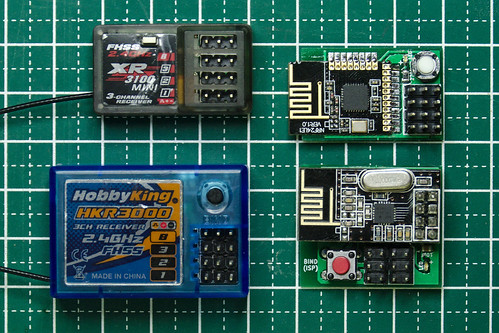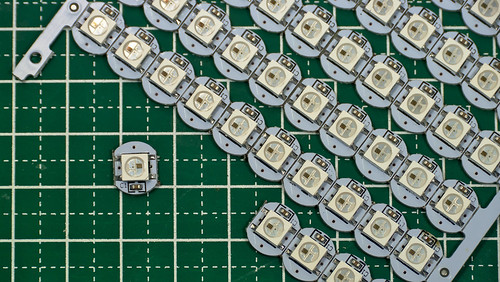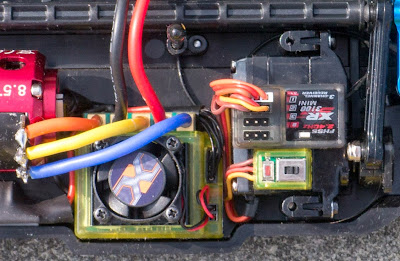We are currently evaluating the popular shift-register programmable LEDs
of type WS2812B and
PL9823 for use in our
DIY RC car light controller.
The PL9823 is of particular interest to us as they are in the traditional
5mm dome type LED package and therefore can be installed easily in the
light buckets that come with many 1/10 scale RC car body shells.
From a software point of view the PL9823 is compatible with the widely
popular WS2812B, with the exception that the data format of the PL9823 is
red-green-blue while the WS2812B requires
green-red-blue.
The brightness of the PL9823 and the WS2812B seems comparable.
However, a downside of the PL9823 is that even if it is not lighting up, it
already consumes 7-8mA of current. In comparison, a WS2812B LED consumes less
than 1mA when it is off. The 7-8mA is still acceptable for use
in an RC car and won't hurt your run time much, but one still needs to take this
into account when desiging a system around those LEDs.
The chart below shows the current used by the LEDs when set to white with different
brightness values from 0 to 255 on the red, green and blue channels.
The PL9823 current usage is ~8mA higher than the
WS2812B at every level.
Happy RC-ing!



